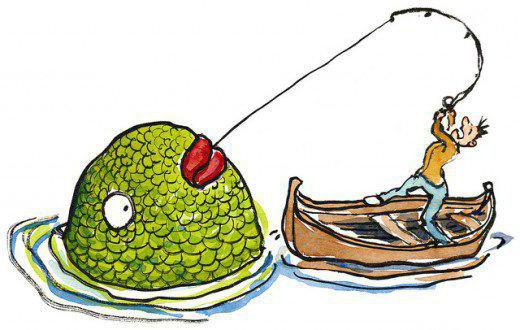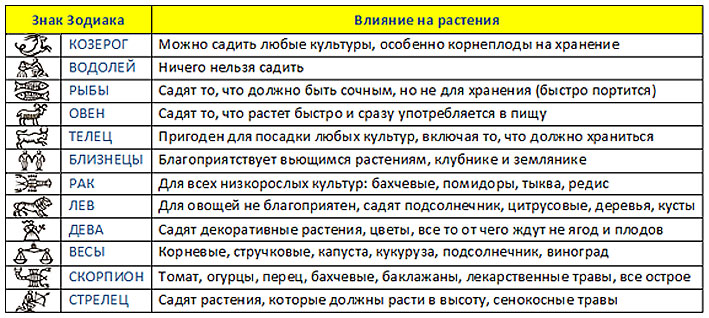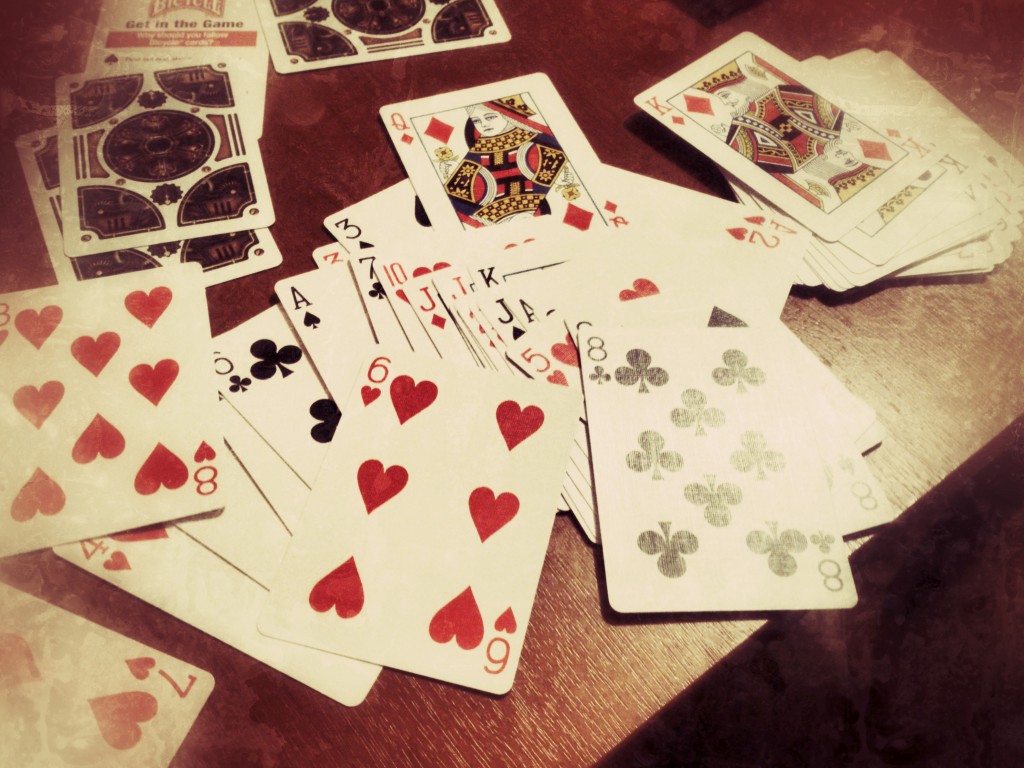The results of the Stolypin reform. Briefly: Stolypin reform, its essence and results
At the turn of the 20th century, the Russian Empire was an economically backward, agrarian-oriented state. The chain of transformations of the last quarter of the 19th century, caused by the need to modernize industrial production, did not bring significant results. Stolypin reforms were ready for implementation. Briefly consider the essence of the reforms proposed by the Chairman of the Government of Russia P.A. Stolypin.
The increased dissatisfaction of the population with power was the impetus for the necessary reform of the system, which had existed for decades. Initially, peaceful actions began to develop into frank, large-scale performances with an abundance of victims.
The revolutionary spirit reached its greatest upsurge in 1905. The authorities were forced not only to continue to look for ways out of the difficult economic situation, but also to struggle with the growth of revolutionary sentiments.
A prerequisite for the rapid deployment of transformations in the agricultural sector was the terrorist attack that occurred in St. Petersburg on Aptekarsky Island on August 12, 1906. About 50 people became victims, and children of the Chairman of the Government P.A. Stolypin, he himself was not miraculously injured. Urgent reforms were necessary, the people demanded fundamental changes.
The draft amendments formulated by the Prime Minister pursued the following objectives:
- Solving the problem of insufficient cultivated land for rural residents.
- Separation of peasants from the community.
- Preservation of landlord tenure.
- The development of agriculture and its transition to bourgeois rails.
- Formation of a class of peasant proprietors.
- Relieving social tension.
- Strengthening government positions through popular support.
Stolypin understood that the implementation of agrarian reform is a necessary and inevitable step to transform the existing order. It is no coincidence that the emphasis was placed on pacifying the peasantry through expanding opportunities for their implementation as farmers, and a qualitative improvement in the living conditions of most dissatisfied.
- In view of the danger of terrorist acts to the population, the government introduced a state of emergency in a number of provinces, and military courts were established, whose activities were aimed at expedited consideration of crimes and the swift imposition of punishments for perpetrators.
- The beginning of the work of the State Duma on the planning and implementation of reforms in the field of agriculture.
Stolypin did not plan to dwell solely on economic and agricultural changes. His intentions were to introduce equal rights among citizens of the country, increase teachers' salaries, organize compulsory primary education, establish religious freedom, and reform local government bodies. Stolypin and his reforms fundamentally changed the internal situation in Russia, breaking traditions and views that had been established for centuries.

Reform Chronology
Stolypin decided to start his complex of transformations, consisting of economic reforms, with the elimination of the community structure. The activities of the peasants living in the villages were organized by the community and were under its control. For the poor it was a serious support, for the middle peasants and kulaks it was a limiter of the possibility of developing a personal economy.
The collective spirit of the community, focused on the joint implementation of the required indicators in agriculture, hindered the increase in yield growth. The peasants were not interested in productive labor, did not have fertile allotments and effective means for cultivating the land.
On the path of transformation
The beginning of a revolutionary Stolypin agrarian reform of its kind was the date of November 9, 1906, when the community was abolished, the peasant could freely leave it, while preserving property, and allotted means of production. He could unite scattered plots of land, form a farm (allotment on which the peasant moved, leaving the village and leaving the community) or a cut (a plot of land allocated by the community to the peasant with the preservation of his residence in the village) and begin work in his interests.

The consequence of the first changes was the formation of a real opportunity for the independent labor activity of the peasants and the untouchedness of landlord tenure.
A prototype of peasant farms focused on their own profit was created. The anti-revolutionary orientation of the issued decree of 1906 was also visible:
- peasants who have separated from the community are less affected by revolutionary sentiment;
- the villagers focus their interest not on revolution, but on the formation of their own good;
- there was an opportunity to save landowner land ownership in the form of private property.
However, few used the right to leave the community freely. Statistics show the minimum percentage of peasants who wish to separate from collective farming within the community. The bulk of these were fists and middle peasants, who had finances and opportunities to increase profitability and improve their living conditions, as well as the poor, who wanted to receive subsidies from the state for leaving the community.
Note!The poorest peasants who left the community returned after some time due to the inability to set up work on their own.
Settling of empty territories of the country
By the beginning of the 20th century, the Russian Empire, stretching over many thousands of kilometers, was still not sufficiently developed territorially. The population growing in Central Russia did not have enough land for cultivation. The Stolypin government was forced to look east.

Immigrants
The resettlement policy for the Urals was aimed primarily at landless peasants. It is important to note that this was a non-violent action, on the contrary, the state tried in every possible way to stimulate the resettlement of all comers with various benefits:
- exemption of peasants from taxes for 5 years;
- the provision of ownership of significant territories (up to 15 hectares per family member);
- the liberation of the male population from among migrants from military service;
- provision of cash loans for the initial arrangement in the new territory.
Initially, the idea of \u200b\u200bresettlement aroused enthusiasm among the landless peasants who left the communities. Without hesitation, they set off for the Urals. It is worth noting that the state was not ready for such an upsurge of the migratory spirit and could not prepare favorable conditions for living on new lands. Statistics indicate the return of about 17% of the 3 million immigrants who left between 1906 and 1914.
Interesting! The quite promising idea of \u200b\u200bthe Stolypin agrarian reform was not fully realized, the flow of peasants wishing to relocate was constantly decreasing.
Useful video: Stolypin reforms
Consequences of reforms and evaluation of results
Change plans implemented during the period of political activity P.A. Stolypin, had significant significance for the destruction of the existing structures and orders in society and the state.
The results of Stolypin’s reforms will help to evaluate the table, which indicates the strengths and weaknesses of the changes made. .
The results of Stolypin’s reforms were also expressed in the form of an increase in sown areas, an increase in the number of agricultural machinery purchased. The use of fertilizers and new methods of cultivating the land began to stimulate an increase in productivity. There was a huge leap in the industrial sector (up to +8.8% per year), it brought the Russian Empire to first place in the world in terms of economic growth per year.

The consequences of the Stolypin reform
Despite the fact that Stolypin was not able to create a wide network of farms on the basis of the peasants who left the community, his economic reforms should be appreciated. The large role of traditionalism in society and agricultural methods has not allowed to achieve high efficiency of transformations.
Important! Stolypin reforms became the impetus for the creation of peasant cooperatives and cooperatives oriented to profit through joint labor and pooling capital.
The Stolypin reforms basically implied dramatic changes in the Russian economy. The government was aimed at strengthening agriculture, abandoning the community, maintaining landowner land use, and providing opportunities for realizing the potential of strong peasant owners.
The progressive essence of ideas P.A. Stolypin did not find wide support among his contemporaries. The Narodniks advocated the preservation of communal land ownership and opposed the popularization of capitalist ideas in domestic politics, while the right-wing forces denied the possibility of preserving landowner possessions.
Useful video: the whole essence of the Stolypin reform in a few minutes
Output
Unfortunately, the participation of the Russian empire in military campaigns, the emergence of free-thinking parties and the strengthening of revolutionary sentiments did not allow developing opportunities to increase the country's potential and to gain a leading position in the world in all economic indicators. Most progressive ideas of Stolypin were not realized.
By the beginning of the 20th century, the Russian Empire was increasingly lagging behind Western competitors in its technical, economic and social development. The so-called “catching up” modernization, which began in the middle of the 19th century, did not help bridge this gap. The large-scale reforms of the 1860-70s did not bring the desired results. The state simply needed new
transformations that would rebuild the economy and social development in a capitalist fashion.
Reform Start
Such an attempt was the complex of reforms of the head of government Pyotr Arkadyevich Stolypin. First of all, it concerned the transformations in the agricultural sector. It was expected that the results of the Stolypin reform will give a powerful impetus to the development of all significant areas in the country. Their main plan was to create a powerful layer of a wealthy, independent and entrepreneurial peasantry that would revive commodity relations and turn Russia into an even more important exporter of agricultural products. The final results were seen by her mastermind in the emergence of a class of strong business executives, similar to American farmers. For these purposes, the state

a credit bank, by decree of the government, launched a massive campaign to issue loans to peasants for the purchase of land. At the same time, non-repayment of debt was rather severely punished - by confiscation of the purchased land. This, according to the plans of the reformers, was to spur private initiative. The second important part of agrarian reform was the land development program in Siberia. Sites in this region were distributed and completely free to interested peasants for use. And the government in every possible way encouraged and facilitated the movement of peasant families beyond the Urals. For these purposes, special trains were created, later known as "Stolypin cars". In addition, infrastructure was actively created in Siberia during this period.
The results of the agricultural reform of Stolypin
The intentions, without a doubt, of a significant politician in Russian history, were never brought to their logical conclusion. Their implementation was first interrupted by his death in 1911, and later completely postponed due to the continental

the war. Thus, it can hardly be said that the results of Stolypin’s reforms were any sufficient. However, a number of trends during their period have nevertheless been outlined, so some results can be summed up.
Positive results of Stolypin's reform in the agricultural sector
The result of government actions was that from 10% to 20% of the population stood out from the peasant community. The latter began independent farming. In the next few years, successful peasants began to give up to half of all the bread that appeared on the market. Partially, plans were implemented, since during the reform more than 3 million households moved there. As a result, new regions were involved in commodity-market relations. The country has significantly expanded the area of \u200b\u200barable land.
Negative results of the Stolypin reform
The stratification of the independent village led to the fact that along with the successful, poor peasants also appeared. Even the farms that left the community still maintained close relations with it. In this regard, the reform turned out to be halfway. It also did not have a tangible impact on the technological development of agriculture. By 1911, the archaic plow was still the main instrument of the Russian peasant.
Agrarian transformation (briefly - Stolypin reform) is the generalized name for a whole complex of measures that have been carried out in the field of agriculture since 1906. P. A. Stolypin led these changes. The main goal of all events was to create conditions for attracting peasants to work on their land.
In the past, the system of such transformations (reforms of P. A. Stolypin - briefly) was criticized in every possible way; today it is customary to praise it. Moreover, no one seeks to fully understand it. Do not forget that Stolypin himself was not the author of agrarian reform, it was only part of the general system of reforms he had conceived.
Stolypin as Minister of the Interior
The relatively young Stolypin came to power without much struggle and labor. His candidacy in 1905 was put forward by Prince A. D. Obolensky, who was his relative and chief prosecutor of the Synod. The opponent of this candidacy was S. Yu. Witte, who saw another person as the Minister of the Interior.
Having come to power, Stolypin failed to change the attitude of the cabinet. Many officials never became like-minded. For example, V.N. Kakovo, who held the post of Minister of Finance, was very skeptical about Stolypin’s ideas regarding the solution of the agrarian question - he spared money on it.

In order to protect himself and his family, Stolypin, at the suggestion of the king, moved to the Winter Palace, which was reliably guarded.
The most difficult decision for him was the adoption of a decree on military courts. He later admitted that he was forced to bear this “heavy cross” against his own will. The following describes Stolypin’s reforms (briefly).
General Description of the Modernization Program
When the peasant movement began to decline by the fall of 1906, the government announced its plans for the agrarian question. The so-called Stolypin program began with a decree dated 11/09/1906. The agrarian reform of Stolypin followed, which is briefly described in the article.
Being the governor of Saratov, the future minister wanted to organize assistance to create strong individual farms for peasants on the basis of state lands. Such actions were supposed to show the peasants a new path and encourage them to abandon communal land ownership.
Another official, V. I. Gurko, was developing a project whose goal was to create farms on peasant lands, and not on state ones. The difference was significant. But even this Gurko considered not the most important. Its main goal was to secure allotment land in the ownership of peasants. According to this plan, any member of the peasant community could pick up his allotment, and no one had the right to reduce or change it. This would allow the government to split the community. Stolypin's reform (briefly agrarian) was required by the unfavorable situation in the empire.
The situation in the country on the eve of the reform
In 1905-1907, peasant unrest took place as part of the revolution in Russia. Together with domestic problems, in 1905 Russia lost in the war with Japan. All this spoke of serious problems that needed to be addressed.

At the same time, the State Duma begins work. She gave the green light to the reforms of Witte and Stolypin (briefly - agrarian).
Directions
Transformations were to create strong economic allotments and destroy collective ownership of land, which impeded further development. It was necessary to eradicate obsolete class restrictions, to encourage the purchase of land from landowners, and to increase the speed of running their own households by lending.
The agricultural reform of Stolypin, which is briefly described in the article, was aimed at improving allotment of land tenure and practically did not concern private property.
The main stages of modernization
By May 1906, a congress of noble societies was held, at which D. I. Pestrzhetsky made a report. He was one of the officials of the Ministry of Internal Affairs who was developing an agricultural project. His report criticized possible land transformations. It stated that throughout the country the peasants had no problems with the lack of land, and the nobles had no reason to alienate it. It was proposed to solve some cases of land shortage by purchasing allotments through a bank and relocation to the outskirts of the country.

The report provoked ambiguous opinions of the nobles on this matter. The views on the reforms of Witte and Stolypin (in short - agrarian reform) were equally ambiguous. There were also those (Count D. A. Olsufiev) who proposed to compromise with the peasants. This meant selling them land, leaving themselves the bulk. But such reasoning did not meet the support or even sympathy of the majority of those present.
The only thing almost everyone at the congress was unanimous in was a negative attitude towards the communities. K. N. Grimm, V. L. Kushelev, A. P. Urusov and others made attacks on peasant communities. Regarding them, the phrase sounded that "this is a swamp, in which everything that could be in the open is linked." The nobles believed that for the benefit of the peasants the community needed to be destroyed.

Those who tried to raise the question of the alienation of landowner land did not receive support. As far back as 1905, when N.N. Kutler, the manager of land management, proposed to the tsar to solve in this way the problem of the low-land peasants, the ruler refused him and fired.
Stolypin was also not a supporter of the forced alienation of the land, believing that everything was taking its course. Some of the nobles, fearing the revolution, sold the land to the Peasant Bank, and he divided it into small plots and sold it to those peasants who were close to the community. This was the main point of Stolypin’s reform briefly.

During 1905-1907, the bank bought more than 2.5 million acres of land from landowners. However, the peasants, fearing the liquidation of private land ownership, practically did not make land purchases. During this time, the bank sold only 170 thousand tithes. The activities of the bank caused discontent among the nobles. Further, land sales began to increase. The reform began to bear fruit only after 1911.
Stolypin reform results
Brief statistics of the results of the agrarian reform:
- more than 6 million households filed an application for securing allotments in private property;
- by the February Revolution, about 30% of the land was transferred to the ownership of peasants and partnerships;
- with the help of the peasant bank, peasants acquired 9.6 million dessiatines;
- landowner farms lost their significance as a mass phenomenon; by 1916, almost all the land sowing was peasant.
The results of the reform are characterized by a rapid increase in agricultural production, an increase in the capacity of the domestic market, and an increase in agricultural exports, and Russia's trade balance has become more and more active. As a result, it was possible not only to get agriculture out of the crisis, but also to turn it into the dominant of Russia's economic development. The gross income of all agriculture in 1913 amounted to 52.6% of the total gross income. The income of the entire national economy, due to the increase in the value created in agriculture, increased in comparable prices from 1900 to 1913 by 33.8%.
Differentiation of types of agricultural production by regions led to an increase in the marketability of agriculture. Three quarters of all industry-processed raw materials came from agriculture. The agricultural commodity turnover increased during the reform period by 46%.
Even more, by 61% compared with 1901-1905, the export of agricultural products increased in the prewar years. Russia was the largest producer and exporter of bread and flax, a number of livestock products. So, in 1910, Russian wheat exports accounted for 36.4% of total world exports.
The foregoing does not mean at all that pre-war Russia should be represented as a "peasant paradise." The problems of hunger and agricultural overpopulation were not resolved. The country continued to suffer from technical, economic and cultural backwardness. According to the calculations of I. D. Kondratiev, in the USA, on average, the farm accounted for fixed capital in the amount of 3900 rubles, and in European Russia the fixed capital of the average peasant farm barely reached 900 rubles. The national per capita income of the agricultural population in Russia was approximately 52 rubles per year, and in the United States - 262 rubles.
The growth rate of labor productivity in agriculture was relatively slow. While in Russia in 1913 they received 55 pounds of bread from one tithe, in the USA they received 68 pounds, in France - 89, and in Belgium - 168 pounds. Economic growth occurred not on the basis of intensification of production, but due to an increase in the intensity of manual peasant labor. But in the period under review, socio-economic conditions were created for the transition to a new stage of agrarian transformations - the transformation of agriculture into a capital-intensive technologically advanced sector of the economy.
The results and consequences of the Stolypin agrarian reform
The community resisted a clash with private land property, and after the February Revolution of 1917, it launched a decisive offensive. Now the struggle for land again found a way out in the arsons of the estates and the murders of the landlords, which took place with even greater fierceness than in 1905. “Then they did not finish the job, stopped halfway? - reasoned the peasants. “Well, now we won’t stop and exterminate all the landowners at the root.”
The results of the Stolypin agrarian reform are expressed in the following figures. By January 1, 1916, 2 million households had left the community in a streak fortification. They owned 14.1 million dess. land. 469 thousand households living in endless communities received certificates of 2.8 million dessiatins. 1.3 million households passed to farm and bran ownership (12.7 million dessiatins). In addition, 280 thousand farms and bran farms were formed on bank lands - this is a special account. But the other figures given above cannot be mechanically added, since some householders, having strengthened the plots, then went out to the farm and cut, while others went to them immediately, without streaking reinforcement. According to rough estimates, about 3 million households left the community, which is slightly less than a third of their total number in those provinces where the reform was carried out. However, as noted, some of the evicts have long since abandoned agriculture. 22% of the land was withdrawn from the community turnover. About half of them went on sale. Some part returned to the community cauldron.
For 11 years of the Stolypin land reform, 26% of the peasants left the community. 85% of the peasant lands remained in the community. In the end, the authorities failed to either destroy the community or create a stable and sufficiently massive layer of peasant owners. So what can be said about the general failure of the Stolypin agrarian reform.
However, it is known that after the end of the revolution and before the outbreak of the First World War, the situation in the Russian countryside improved markedly. Of course, in addition to reform, other factors also acted. Firstly, as has already happened, since 1907 redemption payments have been canceled, which the peasants paid for over 40 years. Secondly, the global agricultural crisis ended and grain prices began to rise. From this, presumably, something fell over and simple peasants. Thirdly, during the years of the revolution, landlord tenure decreased, and in this connection the enslaving forms of exploitation also decreased. Finally, fourthly, for the entire period there was only one lean year (1911), but two successive years (1912-1913) had excellent yields. As for agrarian reform, such a large-scale event, requiring such a significant land shake-up, could not have a positive effect in the very first years of its implementation. Nevertheless, the activities accompanying her were a good, useful thing.
This applies to the provision of greater personal freedom to the peasants, the installation of farms and cuts on bank lands, resettlement to Siberia, some types of land management.
Positive results of agrarian reform
The positive results of agrarian reform include:
Up to a quarter of households stood out from the community, the stratification of the village intensified, the rural elite gave up to half the market bread,
3 million households moved from European Russia,
4 million acres of communal land were involved in market circulation,
The cost of agricultural implements increased from 59 to 83 rubles. one yard
The consumption of superphosphate fertilizers increased from 8 to 20 million pounds,
For 1890-1913 per capita income of the rural population increased from 22 to 33 rubles. in year,
Negative results of agrarian reform
The negative results of agrarian reform include:
- from 70% to 90% of the peasants who left the community in one way or another maintained ties with the community, the bulk of the peasants were the labor farms of the community members,
0.5 million migrants returned to Central Russia,
The peasant's yard accounted for 2-4 tithes, at a rate of 7-8 tithes,
The main agricultural tool is plow (8 million pieces), 58% of the farms did not have plows,
Mineral fertilizers were used on 2% of the sown area,
In the years 1911-1912. the country was struck by famine, which swept 30 million people.
The reasons for the collapse of the Stolypin agrarian reform
In the course of the revolution and civil war, communal land ownership was a decisive victory. However, a decade later, at the end of the 1920s, a sharp struggle broke out again between the peasant community and the state. The result of this struggle was the destruction of the community.
But a number of external circumstances (the death of Stolypin, the beginning of the war) interrupted the Stolypin reform. If we look at all those reforms that were conceived by Stolypin and announced in the declaration, we will see that most of them failed to come true, and some were just begun, but the death of their creator did not allow them to end, because many introductions were enthusiastic Stolypin, who tried to somehow improve the political or economic structure of Russia.
Stolypin himself believed that for the success of his endeavors it would take 15-20 years. But also for the period 1906 - 1913. a lot has been done.
The revolution showed a huge socio-economic and political gap between the people and the authorities. The country needed radical reforms that did not follow. We can say that the country during the Stolypin reforms was not experiencing a constitutional crisis, but a revolutionary one. Standing still or half-reforming could not solve the situation, but only on the contrary expanded the bridgehead for the struggle for fundamental changes. Only the destruction of the tsarist regime and landlord tenure could change the course of events, the measures that Stolypin took in the course of his reforms were half-hearted. The main collapse of Stolypin’s reforms consists in the fact that he wanted to carry out reorganization outside the democratic way and, contrary to him, Struve wrote: “It is his agrarian policy that is in a flashy contradiction with his other policies. It changes the economic foundation of the country, while all the rest of the policy seeks to preserve the political "superstructure" in the greatest possible integrity and only slightly adorns its facade. " Of course, Stolypin was an outstanding figure and politician, but with the existence of the system that existed in Russia, all of his projects “split up” about misunderstanding or unwillingness to understand the importance of his undertakings. I must say that without those human qualities, such as courage, determination, assertiveness, political intuition, cunning - Stolypin was hardly able to make any contribution to the development of the country.
What are the reasons for her defeat?
First, Stolypin began his reforms very late (not in 1861, but only in 1906).
Secondly, the transition from a natural type of economy to a market one under the conditions of an administrative-command system is possible, first of all, on the basis of the vigorous activity of the state. At the same time, the financial and credit activity of the state should play a special role. An example of this is the government, which managed to reorient the powerful bureaucratic apparatus of the empire to energetic work with amazing speed and scope. At the same time, "local economic and economic profitability was sacrificed consciously for the future social effect of the creation and development of new economic forms." So the Ministry of Finance, the Peasant Bank, the Ministry of Agriculture, and other state institutions acted.
Thirdly, where administrative principles of economic management and equalizing methods of distribution dominated, there will always be strong opposition to transformations.
Fourth, the cause of the defeat is the massive revolutionary struggle that swept the tsarist monarchy from the historical arena together with its agrarian reform.
Therefore, it is necessary to have social support in the face of initiative and qualified segments of the population.
The collapse of the Stolypin reform did not mean that it had no serious significance. It was a major step along the capitalist path; it contributed to a certain extent to the growth in the use of machinery and fertilizers, and to an increase in the marketability of agriculture.
What were the results of the Stolypin agrarian course, which was the last stake of tsarism in the struggle for existence? Did Stolypin Agrarian Reform Fail? Historians generally believe that the results were very far from expected.
In about ten years, only 2.5 million peasant farms managed to free themselves from the care of the community. The movement to abolish "worldly" rule in the village reached its highest point between 1908 and 1909. (about half a million requests annually). However, later this movement was noticeably reduced. Cases of complete dissolution of the community as a whole were extremely rare. “Free” peasant holdings accounted for only 15% of the total cultivated land. Almost half of the peasants working on these lands (1.2 million) got the cut and the farm, permanently assigned to them, in private ownership. Only 8% of the total number of workers could become owners, but they were lost nationwide.
The reform results are characterized by a rapid increase in agricultural production, an increase in the capacity of the domestic market, and an increase in agricultural exports, and Russia's trade balance has become increasingly active. The country's agriculture did not know such a take-off either before or after the reform. As a result, it was possible not only to get agriculture out of the crisis, but also to turn it into the dominant of Russia's economic development.
However, the problems of hunger and agricultural overpopulation were not resolved. The country continued to suffer from technical, economic and cultural backwardness. So in the USA, on average, the farm accounted for fixed capital in the amount of 3900 rubles, and in European Russia the fixed capital of the average peasant farm barely reached 900 rubles.
Land management policy has not yielded dramatic results. Stolypin land management, shuffling allotment land, did not change the land system, it remained the same.
The activities of the peasant bank also did not produce the desired results. High prices and large payments imposed by the bank on borrowers led to the ruin of the mass of farmers and chippers. All this undermined the peasants' trust in the bank, and the number of new borrowers went down.
The resettlement policy clearly demonstrated the methods and results of the Stolypin agrarian policy. Migrants preferred to settle in already inhabited places, such as the Urals, Western Siberia, rather than engage in the development of uninhabited forest zones. Between 1907 and 1914 3.5 million people went to Siberia, about 1 million of them returned to the European part of Russia, but already without money and hopes, because the previous farm was sold.
In a word, the reform failed. She did not achieve the economic or political goals that were set before her. The village, along with farms and cuts, remained as poor as before Stolypin. Although, it is necessary to cite the figures that G. Popov cites - they show that some shifts in the positive direction were observed: from 1905 to 1913. the volume of annual purchases of agricultural machinery grew by 2-3 times. Grain production in Russia in 1913 exceeded by one third the volume of grain production in the USA, Canada, Argentina combined. Russian grain exports reached 15 million tons per year in 1912. Oil was exported to England in an amount twice as high as the cost of all the annual gold production in Siberia. The excess bread in 1916 amounted to 1 billion pounds. Is not that encouraging performance? But still, according to Popov, the main task - to make Russia a country of farmers - could not be solved. Most peasants continued to live in the community, and this, in particular, predetermined the course of events in 1917. The fact is that the Stolypin course failed politically. He did not make the peasant forget about the landowner land, as the authors of the decree calculated on November 9.
The main reason for the failures of bourgeois reforms is clearly manifested - an attempt to carry them out within the framework of the feudal system. It can be assumed that the Stolypin reforms, if they continued, say, for another 10 years, would bring certain results, the main of which would be the creation of a layer of small peasant proprietor farmers, and even then, according to Lenin, if "circumstances developed extremely favorable for Stolypin. "
The positive results of agrarian reform include:
Up to a quarter of households stood out from the community, the stratification of the village intensified, the rural elite gave up to half the market bread,
3 million households moved from European Russia,
4 million acres of communal land were involved in market circulation,
The cost of agricultural implements increased from 59 to 83 rubles. one yard
The consumption of superphosphate fertilizers increased from 8 to 20 million pounds,
For 1890-1913 per capita income of the rural population increased from 22 to 33 rubles. in year.
Negative reform results
From 70% to 90% of the peasants who left the community in one way or another maintained ties with the community, the bulk of the peasants were the labor farms of the community members,
0.5 million migrants returned to Central Russia,
The peasant's yard accounted for 2-4 tithes, at a rate of 7-8 tithes,
The main agricultural tool is plow (8 million pieces), 58% of the farms did not have plows,
Mineral fertilizers were used on 2% of the sown area,
In the years 1911-1912. the country was struck by famine, which swept 30 million people.
Perhaps the main result of the Stolypin reform is reflected in the journal "Herald of Agriculture" for 1910, which he wrote: "Think woke up, pushed onto a new road. "









